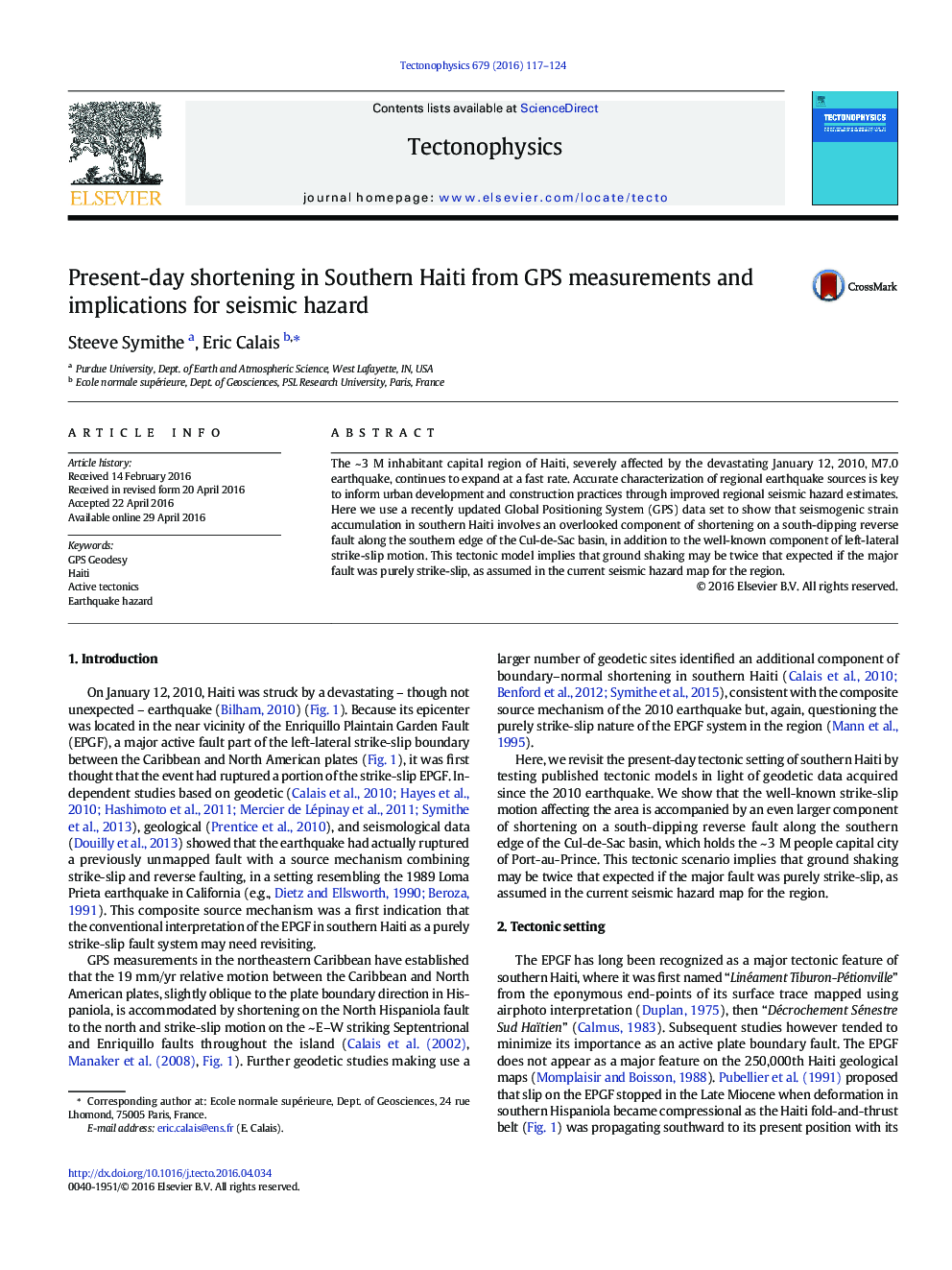| Article ID | Journal | Published Year | Pages | File Type |
|---|---|---|---|---|
| 6433439 | Tectonophysics | 2016 | 8 Pages |
â¢GPS measurements show that seismogenic strain accumulation in southern Haiti involves a component of shortening.â¢Models show that deformation is accommodated by oblique slip on a fault dipping at shallow angle under the Selle Massif.â¢A ground motion scenario shows shaking twice larger than assumed in the current seismic hazard map.â¢The loading rate implies a 223 yr repeat time for Mw7 events in a region devoid from significant ones since the 18th century.
The ~Â 3Â M inhabitant capital region of Haiti, severely affected by the devastating January 12, 2010, M7.0 earthquake, continues to expand at a fast rate. Accurate characterization of regional earthquake sources is key to inform urban development and construction practices through improved regional seismic hazard estimates. Here we use a recently updated Global Positioning System (GPS) data set to show that seismogenic strain accumulation in southern Haiti involves an overlooked component of shortening on a south-dipping reverse fault along the southern edge of the Cul-de-Sac basin, in addition to the well-known component of left-lateral strike-slip motion. This tectonic model implies that ground shaking may be twice that expected if the major fault was purely strike-slip, as assumed in the current seismic hazard map for the region.
Graphical abstractGround motion scenario illustrating the fault model (thick black lines) that best fits the GPS data (shown as black arrows). We simulated a Mw7.0 earthquake with oblique slip on rupture dipping 36° under the Massif de la Selle. Background colors show modified Mercalli intensities. Dashed rectangle shows the surface projection of the simulated rupture. Star shows the location of the ~ 3 M inhabitant city of Port-au-Prince.Download full-size image
